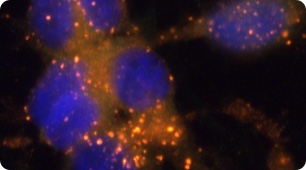
Polyneuropathy
(PNP)
Peripheral nerves, found outside of the brain and the spinal cord, transmit information between all other parts of the body and the central nervous system (CNS). PNP, also known as peripheral neuropathy, is the most common disorder of the peripheral nervous system (PNS). Its prevalence is 1–12% in all age groups. In PNP, multiple peripheral nerves are affected at the same time whereas in mononeuropathy only one nerve is affected. The precise number of people suffering from peripheral nerve disorders is unknown, but most patients have polyneuropathy, the symptoms of which depend on the type of affected peripheral nerves. Numbness, weakness and pain in feet and hands are seen when sensory and/or motor nerves are damaged. There are multiple factors, such as gene mutations, exposure to toxic substances and diabetes that lead to PNP; the etiology of disease is crucial for correct diagnosis.




